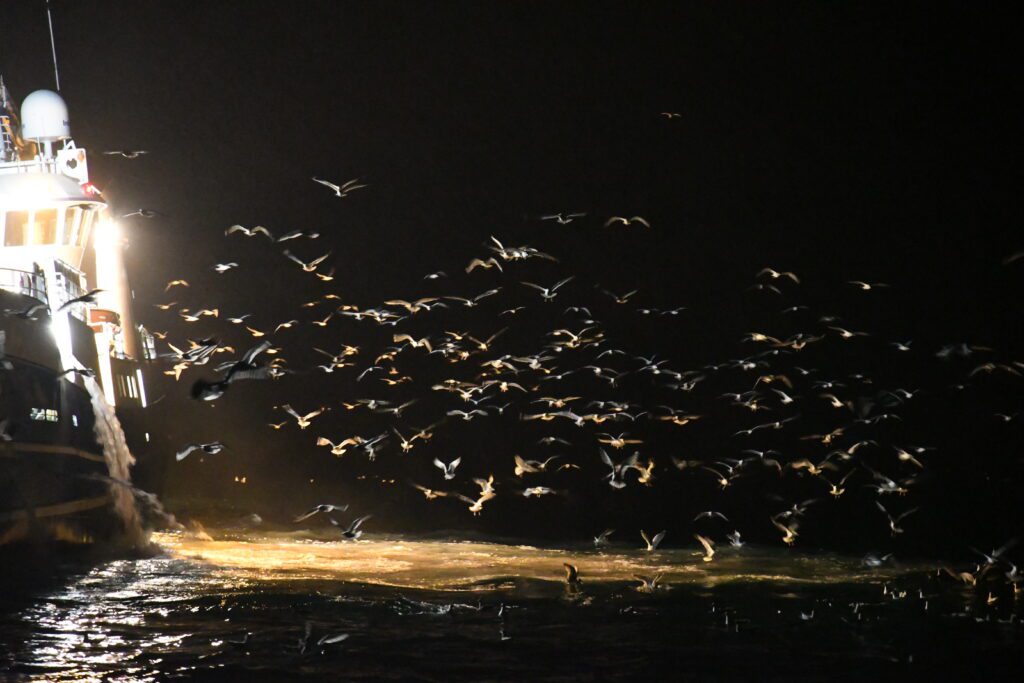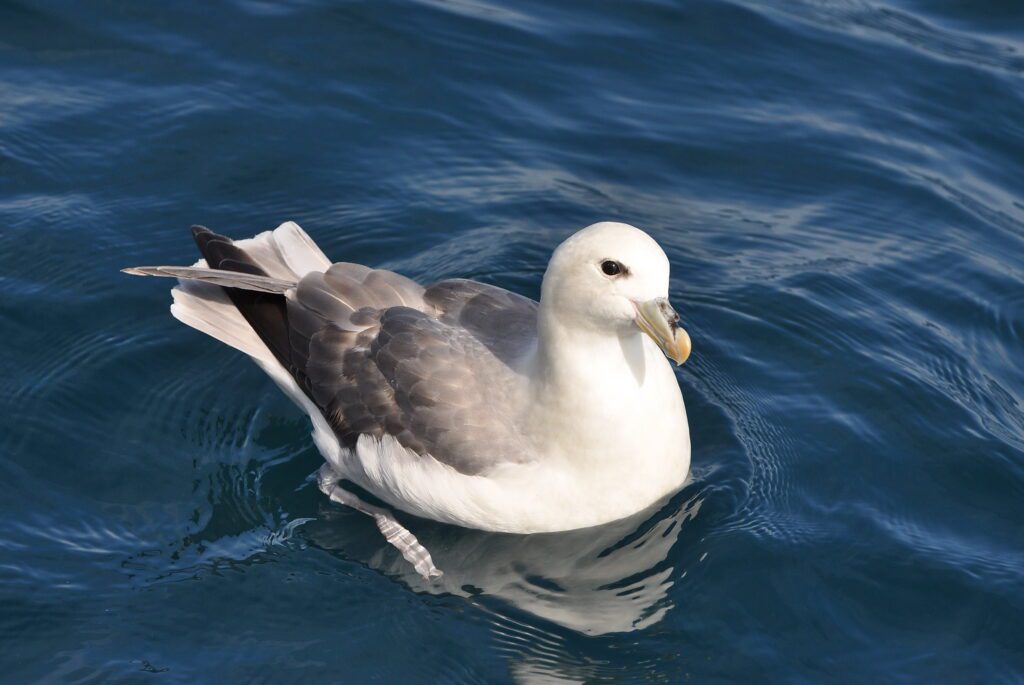Increase in vessel interactions by fulmars
Large flocks of seabirds are often seen foraging on offal around fishing vessels. However, this foraging strategy puts the birds at risk of entanglement in fishing gear and is associated with increased mortality. Scientists have now used a series of tracking data spanning over 16 years to examine if there is any trend in vessel interaction by fulmars.
Benefits and risks
Fisheries waste is used by many seabirds as a supplementary source of food but interacting with fishing vessels to obtain this resource increases bird mortality through entanglement in fishing gear. As a result, bycatch is one of the leading contributors to seabird decline worldwide, and this risk may increase over time as birds increasingly associate fishing vessels with food. Light-level geolocators mounted on seabirds can detect light emitted from vessels at night year-round. Using a 16-year time series of geolocator data from 296 northern fulmars (Fulmarus glacialis) breeding at temperate and Arctic colonies, researchers have investigated trends of nocturnal vessel interactions in this scavenging pelagic seabird.
Increasing encounter rate
The study revealed that vessel attendance has progressively increased over the study period despite no corresponding increase in the number of vessels or availability of discards over the same time frame. Individuals were consistent in the extent to which they interacted with vessels, as shown in other species, suggesting that population-level increases may be due to a higher proportion of fulmars following vessels rather than changes at an individual level.
Less food in the ocean?
Fulmars are highly mobile generalist surface feeders, so these results may signal a reduction in available prey biomass in the upper water column, leading to increased reliance on anthropogenic food subsidies and increased risk of bycatch mortality in already threatened seabird populations. Higher encounter rates were correlated with less time spent foraging and a geographically restricted overwintering distribution. This indicates that foraging around fishing vessels offers an energetic advantage for the fulmars compared with foraging for natural prey.
Read the article:

Photo © Signe Christensen-Dalsgaard

Photo © Rob Barrett
Contact person: Hallvard Strøm, Norwegian Polar Institute
